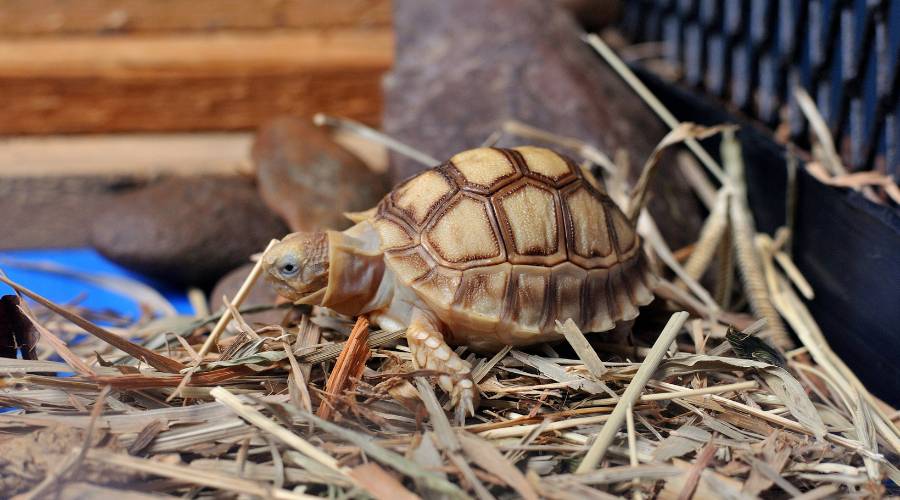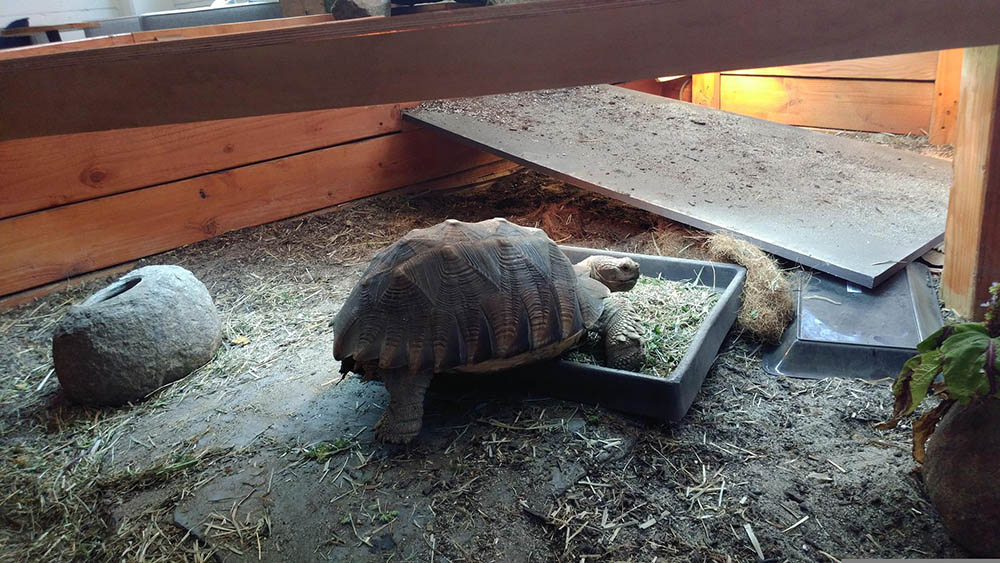You’re in for a treat as we uncover the secrets to creating safe hiding spots and retreat areas for baby turtles. These tiny creatures rely on these areas for protection and survival, making it crucial for us to understand how to provide them with the ideal environment. From choosing the right materials to creating natural camouflage, we’ll explore practical tips and tricks that will help you support the growth and well-being of these adorable little reptiles. So, grab your gardening gloves and get ready to dive into the fascinating world of baby turtles!
Importance of Safe Hiding Spots and Retreat Areas
When it comes to baby turtles, ensuring their safety is of paramount importance. Creating safe hiding spots and retreat areas plays a vital role in protecting them from predators and promoting their natural behavior. These areas provide a sense of security and allow the turtles to exhibit their innate instincts without fear or stress. By understanding the importance of safe spaces, we can take the necessary steps to provide a suitable habitat for these vulnerable creatures.
Protection from Predators
Baby turtles are particularly vulnerable to predators in their early stages of life. From birds to fish and even other reptiles, there are numerous creatures that pose a threat to these tiny turtles. By providing safe hiding spots and retreat areas, we can offer them protection from these predators. These hiding spots allow the young turtles to escape and seek shelter whenever they feel threatened, increasing their chances of survival significantly.
Promotion of Natural Behavior
Creating safe hiding spots and retreat areas is not only about protecting baby turtles from harm but also about promoting their natural behavior. In the wild, turtles instinctively seek out suitable hiding places to rest, sleep, and observe their surroundings. By recreating these natural habitats, we allow the turtles to exhibit their innate instincts and behaviors, leading to a healthier and more fulfilling life for these remarkable creatures.
Considerations for Creating Safe Spaces
When creating safe hiding spots and retreat areas for baby turtles, there are several important factors to consider. These factors will ensure that the spaces we provide are suitable and conducive to the turtles’ well-being.
Proximity to Water Source
One crucial consideration is the proximity of these hiding spots and retreat areas to a water source. Baby turtles need easy access to water for drinking, bathing, and maintaining their overall hydration. Having these safe spaces located nearby ensures that the turtles can quickly and safely reach their water source, enhancing their chances of survival.
Suitable Temperature and Lighting
Another vital aspect is ensuring that these hiding spots and retreat areas maintain a suitable temperature and lighting. Turtles are ectothermic creatures, meaning their body temperature is regulated by the external environment. Creating areas with the right temperature and lighting conditions allows the turtles to thermoregulate effectively and remain healthy.
Size and Depth of Hiding Spots
The size and depth of hiding spots are critical factors to consider as well. Baby turtles need hiding spots that are spacious enough for them to comfortably retreat into. These hiding spots should also be deep enough to provide sufficient protection from predators. By creating hiding spots with the appropriate size and depth, we ensure that the turtles can find refuge whenever necessary.
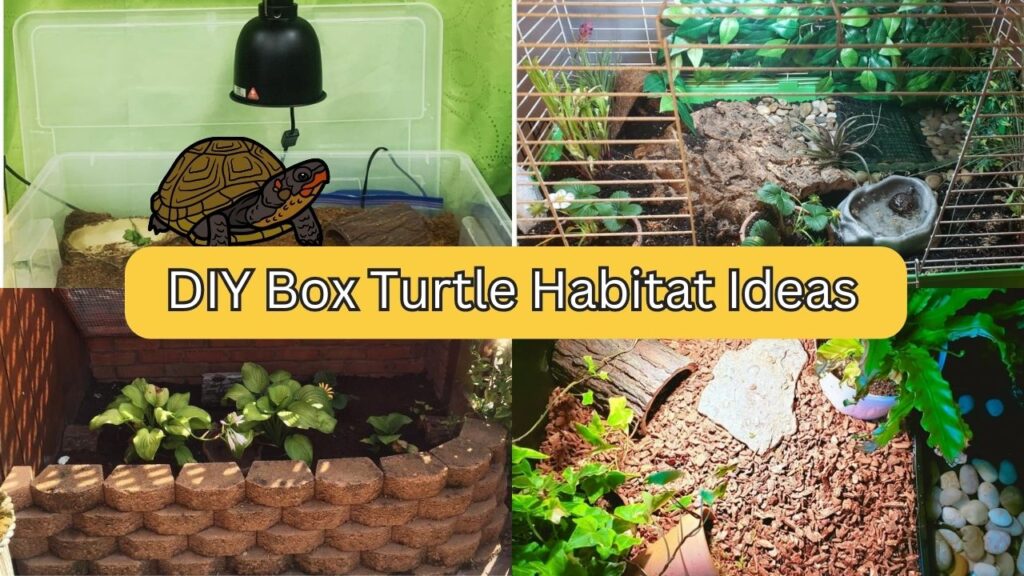
Natural Hiding Spots
In addition to creating artificial hiding spots, utilizing natural hiding spots found in the environment can further enhance the baby turtles’ safety and well-being.
Vegetation and Plants
Vegetation and plants can provide excellent natural hiding spots for baby turtles. Aquatic plants, such as water lilies and water hyacinths, can create dense cover that allows the turtles to conceal themselves from predators. Additionally, terrestrial plants and shrubs near the water’s edge can serve as hiding spots, giving the turtles ample places to seek refuge when needed.
Rock Piles and Boulders
Rock piles and boulders present natural hiding spots that baby turtles can utilize. These structures provide nooks and crevices, allowing the turtles to hide from potential threats. By strategically placing rocks and boulders within their habitat, we can create a safe haven for the turtles and foster a more natural environment for them to thrive.
Tree Stumps and Fallen Logs
Tree stumps and fallen logs can also offer safe hiding spots for baby turtles. These natural structures provide shelter and protection, simulating the turtles’ natural habitats in the wild. By incorporating tree stumps and fallen logs into their environment, we can mimic the natural landscape and contribute to the turtles’ overall well-being.
Artificial Hiding Spots
While natural hiding spots are beneficial, adding artificial hiding spots can further enhance the baby turtles’ safety and security.
Use of Turtle Basking Platforms
Turtle basking platforms serve both as a hiding spot and a sunning spot for baby turtles. These platforms are typically made of materials that float on the water’s surface, providing a safe spot for the turtles to rest and sunbathe. With the added benefit of being a hiding spot, turtle basking platforms offer a multi-functional space that encourages the turtles to exhibit their natural behaviors.
Incorporation of Artificial Caves
Artificial caves can be created to serve as hiding spots for baby turtles. These caves mimic the natural caverns and rocks that turtles would seek shelter in. By crafting artificial caves within their habitat, we give the turtles a safe place to retreat into, providing them with a sense of security and protection.
Placement of Hiding Tunnels
Hiding tunnels can be strategically placed within the baby turtles’ habitat, adding another layer of safety and protection. These tunnels create a passage for the turtles to move from one area to another while remaining hidden from potential threats. By incorporating hiding tunnels, we create a dynamic and secure environment that encourages the turtles’ natural behaviors.
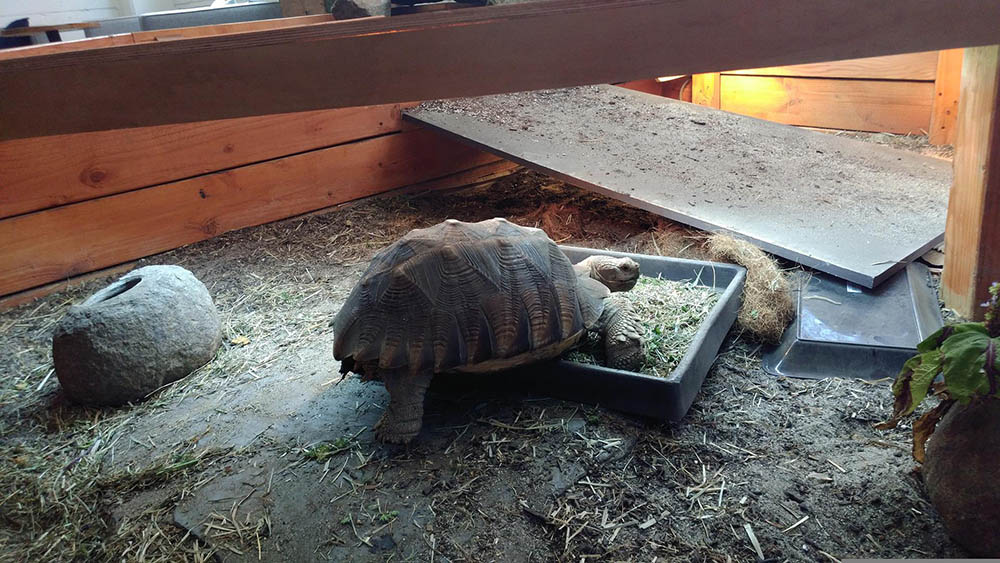
Enhancing Retreat Areas
Creating safe hiding spots and retreat areas is not limited to providing spaces for the turtles to hide. It also involves enhancing these areas to cater to other essential aspects of their well-being.
Creating Sandy Nesting Spots
Baby turtles require suitable nesting spots to lay their eggs. By creating sandy areas within their habitat, we provide them with a convenient location to nest. Sandy nesting spots mimic the natural beaches where turtles would typically lay their eggs. By having these areas available, we encourage the turtles to engage in their natural reproductive behaviors and contribute to the conservation of their species.
Providing Elevated Sunning Spots
In addition to hiding spots, baby turtles need areas where they can bask in the sun. Sunning spots play a crucial role in the turtles’ thermoregulation process and overall health. By incorporating elevated platforms or rocks that receive ample sunlight, we create spaces for the turtles to safely soak up the sun’s warmth and increase their body temperature.
Integrating Shallow Water Areas
Shallow water areas can serve as ideal retreat areas for baby turtles. These areas provide a safe space for the turtles to swim, rest, and explore. By incorporating shallow water areas within their habitat, we enable the turtles to engage in aquatic activities while minimizing the risks associated with deeper water bodies.
Maintenance and Regular Checks
Creating safe hiding spots and retreat areas is only the first step. Regular maintenance and checks are necessary to ensure that these spaces remain safe and suitable for the baby turtles.
Cleaning and Clearing Debris
Routine cleaning and clearing of debris from the hiding spots and retreat areas are essential for maintaining their safety. Leaves, sticks, and other organic matter can accumulate over time, potentially blocking access to the hiding spots or creating hazardous conditions for the turtles. Regular cleaning and removal of debris help maintain a clean and safe environment for the turtles.
Checking for Blockages
It is crucial to regularly check for blockages in hiding spots and tunnels. Debris or collapsed structures can obstruct the turtles’ access to these areas, limiting their ability to seek refuge. By conducting thorough checks and promptly addressing any blockages, we ensure that the hiding spots and retreat areas remain accessible and safe for the turtles.
Monitoring Water Quality
For those hiding spots and retreat areas located near water sources, monitoring the water quality is essential. Poor water quality can negatively impact the turtles’ health and well-being. Regularly testing the water for factors such as pH, temperature, and dissolved oxygen levels can help identify any potential issues and take corrective measures to maintain optimal conditions for the baby turtles.
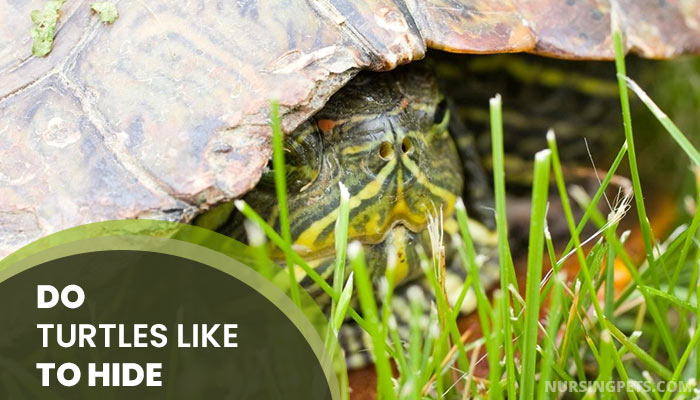
Evaluating Potential Dangers
While we strive to create safe hiding spots and retreat areas, it is important to be aware of potential dangers for the baby turtles and take appropriate measures to mitigate them.
Chemicals and Pollutants
Water bodies near the hiding spots and retreat areas may be at risk of contamination from chemicals and pollutants. Pesticides, fertilizers, and other harmful substances can adversely affect the turtles’ health and survival. Conducting regular water tests and implementing proper water management practices can help minimize the risk of exposure to these harmful substances.
Invasive Predatory Species
Invasive predatory species can pose a significant threat to baby turtles. These species may disrupt the natural balance within the habitat and prey on the vulnerable turtles. Monitoring and promptly addressing the presence of invasive species is crucial in maintaining the safety and well-being of the baby turtles.
Human Interference
Human interference can also present a danger to baby turtles and their hiding spots. Disturbances such as habitat destruction, capturing the turtles, or tampering with their retreat areas can have severe consequences. Educating the public about the importance of protecting and respecting these habitats and implementing strict conservation measures can help minimize human interference and ensure the safety of the baby turtles.
Safety Measures for Nesting Sites
Nesting sites require additional safety measures to protect the eggs and ensure successful reproduction.
Protection against Predators
Nesting sites should be adequately protected against predators. Installing deterrents such as predator barriers, wire mesh, or netting around the nesting areas can help prevent animals from accessing and destroying the eggs. By safeguarding the nesting sites, we increase the chances of successful hatching and contribute to the survival of the baby turtles.
Deterring Unwanted Disturbances
Unwanted disturbances, such as human presence or pets, can disrupt the nesting process and the eggs’ development. Signage, fencing, or designated nesting zones help inform and deter people and animals from entering these areas. By minimizing disturbances, the baby turtles can hatch undisturbed and continue their life cycle without unnecessary risks.
Monitoring and Relocation if Necessary
Regular monitoring of nesting sites is important to ensure the safety of the eggs. In cases where the nesting sites are at risk of natural or human-induced threats, relocation may be necessary. Monitoring the progress of the eggs, identifying potential risks, and taking appropriate action, such as relocating the eggs to a safer location, can significantly increase the chances of successful hatching and the survival of the baby turtles.
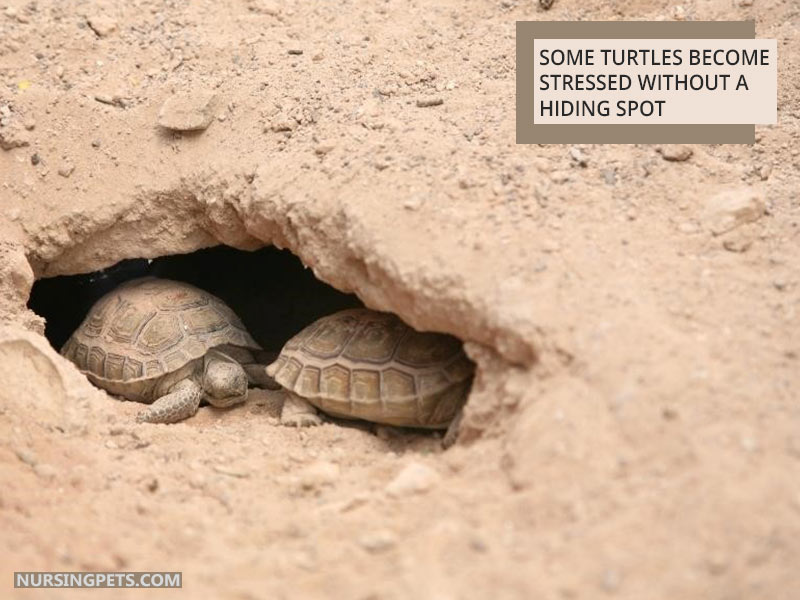
Creating a Suitable Habitat
Creating safe hiding spots and retreat areas is part of a broader objective – establishing a suitable habitat for baby turtles to thrive.
Balancing Sun and Shade
A suitable habitat for baby turtles should offer a balance of sun and shade. Turtles require exposure to both sunlight and shaded areas to maintain their body temperature and regulate their metabolism. By providing a habitat with a mix of sun-drenched and shaded spots, we ensure that the turtles have the necessary options to thermoregulate effectively.
Providing Adequate Food Sources
A diverse and abundant supply of food sources is crucial for baby turtles’ growth and development. Incorporating native plant species and ensuring a healthy aquatic ecosystem supports the availability of natural food sources, such as insects and algae. By providing a variety of food options within their habitat, we contribute to the turtles’ overall nutrition and well-being.
Ensuring Sufficient Water Access
Baby turtles require easy access to water for drinking, bathing, and swimming. A suitable habitat should provide ample opportunities for the turtles to access the water safely. Gradual slopes, shallow water areas, and easy entry and exit points are essential features to consider when designing the habitat. By ensuring sufficient water access, we support the turtles’ natural behaviors and optimize their chances of survival.
Educational Outreach and Conservation Efforts
Alongside creating safe hiding spots and retreat areas, educational outreach and conservation efforts play a crucial role in protecting baby turtles and their habitats.
Raising Awareness about Baby Turtle Needs
Educating the public about the specific needs and requirements of baby turtles is essential for their conservation. By raising awareness about the importance of safe hiding spots and retreat areas, we empower individuals to contribute to the protection and preservation of these habitats. This can be done through educational programs, signage, interactive displays, and media campaigns.
Promoting Habitat Protection
Promoting the protection of baby turtle habitats is key to their long-term survival. Collaboration with local communities, government agencies, and other stakeholders can help establish and enforce regulations that safeguard these habitats from destruction or degradation. By promoting habitat protection, we ensure that safe hiding spots and retreat areas remain intact for the baby turtles to thrive.
Supporting Conservation Organizations
Supporting conservation organizations dedicated to the preservation of baby turtles and their habitats is an impactful way to contribute to their well-being. These organizations conduct vital research, implement conservation initiatives, and raise awareness about the importance of safe hiding spots and retreat areas. Donations, volunteering, and advocacy are ways individuals can support these organizations and make a positive difference in the lives of baby turtles.
In conclusion, providing safe hiding spots and retreat areas for baby turtles is crucial for their protection and the preservation of their natural behaviors. By considering factors such as proximity to water sources, suitable temperature and lighting, and the size and depth of hiding spots, we can create a habitat that ensures the turtles’ well-being. Incorporating natural and artificial hiding spots, enhancing retreat areas, and evaluating potential dangers further contribute to their safety. Regular maintenance, monitoring, and safety measures for nesting sites safeguard the eggs and promote successful reproduction. Creating a suitable habitat through balancing sun and shade, providing adequate food sources, and ensuring sufficient water access supports the baby turtles’ growth and development. Educational outreach and conservation efforts, including raising awareness, promoting habitat protection, and supporting conservation organizations, play a vital role in safeguarding these remarkable creatures. By collectively committing to creating safe spaces for baby turtles, we can contribute to their survival and the preservation of their species.
